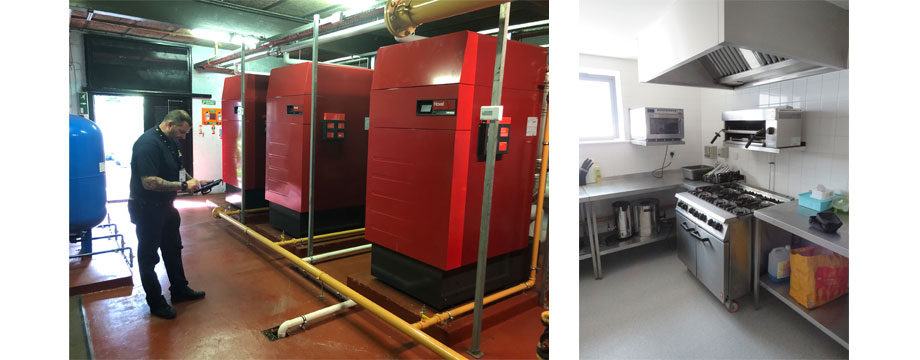The Dangerous Substances and Explosive Atmospheres Regulations 2002 (DSEAR) are concerned with preventing or limiting the harmful effects of fires, explosions and similar energy-releasing events and corrosion to metals.
DSEAR imposes a requirement to eliminate or reduce risks to safety from fire, explosion or other events arising from the hazardous properties of any dangerous substance used in connection with a work process. The responsible person must carry out a suitable and sufficient assessment of risk to employees for dangerous substances that are or may be present on-site.
It is important to note that a site risk assessment is not a DSEAR assessment.
Do you need to undertake a DSEAR assessment for the gas installation pipework within your buildings?
If you answer yes to both the below questions, you need to undertake a DSEAR assessment.
1. Would an explosion or fire at your premises pose a risk to anyone?
This includes gas engineers, maintenance workers, housing staff, ground workers, tenants, site visitors and members of the public.
2. Do you have gas pipework in the communal areas of your properties?
This includes all gas pipework irrespective of ownership if you are the owner/duty holder for that building and responsible for those communal areas.

It is the responsibility of the duty holder to ensure a sufficient assessment has been carried out if required; it is not the responsibility of the contractor and/or installer.
Without these risk assessments, in the event of an incident and subsequent investigation, you could be seen as not having fulfilled your duty under the Health and Safety at Work Act 1974.
It is crucial that those with responsibility and duties for gas safety within multi-occupancy buildings are upskilled. They need to understand risk assessments, duties and associated installation issues for existing gas pipework installations common to housing providers.
Some areas you should consider:
• What are the risks associated with types of gas pipework that may be within your properties?
• What are the risk assessment expectations and possible outcomes?
• Do you understand the regulations and standards relevant to the risk assessment of gas pipework?
• Do you know your duties in relation to gas pipework risk assessment?
• What are other duty holders’ responsibility in relation to gas pipework risk assessment?
• What are the application and requirements of DSEAR relating to multi-occupancy buildings?
Mark Duffy, Technical Safety Manager, at CORGI Technical Services comments, “It’s pleasing to see that many organisations are now recognising the requirement to assess the risks of gas installations that fall under the scope of DSEAR that are located within their properties. This is particularly in their HMOs and their common areas containing gas pipework. The risks that were publicly identified during the Grenfell Inquiry and the awareness drive from the ASCP, and other professional institutions, to raise awareness of the risks and the legal duties have clearly had an effect in creating momentum to start reducing and tackling the risks. The new course from CORGI will also certainly help equip those with managerial responsibilities with the knowledge they need to recognise the duties and help them identify the installations in their care that require assessment.”
NEW Course: CORGI Gas Pipework Risk Assessments in Multiple Occupancy Buildings (incl. DSEAR)
• Recognise risks and fully understand your duties
• Includes practical examples and case studies
• Understand what good looks like
• Understand how to check for competence
Designed specifically for:
• Heads of Health, Safety & Compliance
• Health & Safety Managers
• Compliance Managers & Administrators
• Gas Managers & Supervisors
• M&E Managers & Supervisors
• Facilities Management Managers & Supervisors
• Fire Officers
Delivered online, on demand.
Contact training@corgitechnical.com for further information.
The course is designed for assessing existing installations and not the initial design of new installations.
- Log in to post comments













